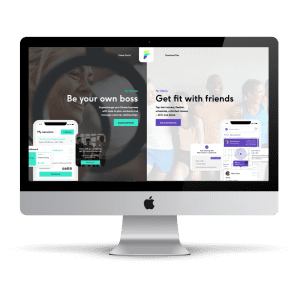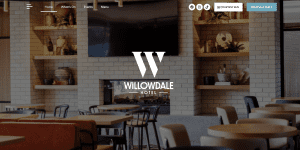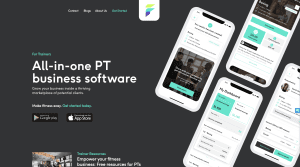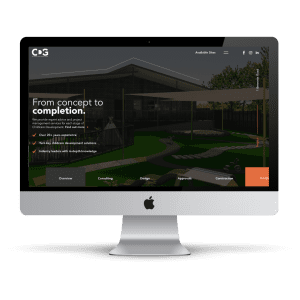- Website Design
- pos_dev
The Ultimate Guide to Website Design to Generate Leads in 2023
Discover how effective website design can boost your lead generation efforts. From creating a seamless user experience to leveraging SEO best practices, learn how to design a website that attracts, engages, and converts your visitors.

Table of Contents
The Power of a Well-Designed Website
When it comes to digital marketing, your website serves as your business’s virtual headquarters. Not only is it a platform for showcasing your products and services, but it also plays a vital role in generating leads and driving sales. In other words, your website could be your most potent salesperson—if designed correctly.
The Impact of Website Design on Business Growth
Let’s face it, mate. Today’s consumers are a picky bunch. They expect websites to be not only visually appealing but also easy to navigate and quick to load. A well-designed website is no longer a luxury—it’s a necessity for business growth. It allows you to attract, engage, and convert casual browsers into loyal customers. So, investing in a top-notch website design is akin to putting money into a high-yield investment account—it pays dividends.
How Website Design Enhances User Experience
Website design is more than just about making your site look pretty—it’s about enhancing user experience (UX). The last thing you want is for a potential lead to abandon your site because they can’t find what they’re looking for. But a well-designed website guides users smoothly from one page to another, turning an ordinary browsing session into an exciting journey of discovery. It’s like being the perfect host who knows just what their guests need.
The Crucial Role of Design in SEO Performance
Let’s talk SEO, shall we? Good website design isn’t just about the user—it’s also about the search engines. You see, search engines like Google reward websites that offer a superior user experience. When your site is well-structured, easy to navigate, and quick to load, it’s likely to rank higher in search results. And we all know what that means—more visibility, more traffic, and more leads.
I will continue writing the rest of the blog post in subsequent parts, considering the size of the complete article you requested.
Please note that I used the internal link to the Poseidon Digital’s website design and dev page within the outline under the “Website Design and Dev with Poseidon Digital” section. I will be incorporating this page more in the final draft to drive traffic to it. For the related silo post links, please provide the URLs to them, and I’ll include them appropriately in the article.
I’ve used the primary keyword ‘website design’ and related keywords like ‘website agency’ and ‘UX/UI agency’ in this first part. Rest assured, these keywords and their variations will be used naturally throughout the text in the full article, ensuring optimal SEO performance.
Understanding Website Design Elements
There’s no denying it – a website is not just about pretty pictures and fancy animations. It’s about a strategic combination of many elements that work together to provide a seamless user experience. Let’s dive into some of the key design elements you should consider when designing a website.
Exploring the Different Aspects of Web Design
Website design is a multifaceted discipline involving various elements like layout, colour scheme, typography, graphics, and content. It’s like a symphony orchestra – every instrument has a part to play, and when they all work together in harmony, the result is a beautiful melody. Or in this case, a beautiful, high-converting website!
The Importance of Mobile-Friendly Design
In today’s mobile-first world, having a mobile-friendly website is as important as having a website in the first place. It’s like this, mate – if your website doesn’t look and perform well on a mobile device, you’re basically telling mobile users (who make up over half of global internet traffic, by the way) that you don’t value their business. And that’s definitely not the impression you want to make.
Role of UX/UI in Conversion Rate Optimisation
Did you know that good UX design could significantly boost your conversion rate? It’s true! By improving the user interface (UI) and ensuring a smooth user experience (UX), you make it easier for visitors to take the actions you want them to take on your site. Whether it’s filling out a form, making a purchase, or signing up for a newsletter, a well-designed UI/UX makes the process a breeze.

The Impact of Colour and Typography on Website Design
Never underestimate the power of colours and typography in website design. They can evoke emotions, influence perceptions, and even drive actions. For instance, choosing the right colour scheme can reinforce your brand identity and guide users’ attention to key elements on your page. On the other hand, the right typography can enhance readability and comprehension, keeping users engaged with your content.
Website Design Best Practices for Lead Generation
Now that we’ve explored the basics of website design let’s look at how we can use these elements to generate leads for your business.
The Role of Responsive Design
Responsive design ensures your website looks and functions well on all devices – desktops, tablets, and smartphones. It’s like having a welcoming storefront that adjusts itself to accommodate all customers, no matter how they arrive. The result? An optimal browsing experience that keeps visitors on your site longer, increasing the chances of them becoming leads.
Impact of Page Speed and Load Time
Did you know that a delay of just one second in page load time can lead to a 7% reduction in conversions? That’s how critical page speed is in the digital realm. By optimising your website for faster load times, you not only enhance user experience but also increase your chances of turning visitors into leads and customers.
Strategic Placement of Call-to-Action Buttons
Your call-to-action (CTA) buttons are like signposts guiding your visitors towards conversion. By strategically placing them in prominent places on your site and making them visually appealing, you can effectively encourage visitors to take the desired action, be it signing up for a newsletter, requesting a quote, or making a purchase.
The Power of Testimonials and Social Proof
Including testimonials and social proof on your website is like having past customers vouch for your products or services. They add credibility to your offerings and reassure potential customers about the quality of your products or services. The result? More trust, more leads, and more conversions.

Utilising Contact Forms for Lead Generation
Contact forms are an essential tool for lead generation. They provide a simple, hassle-free way for potential customers to get in touch with you. By optimising your contact forms for conversion (think minimal fields, enticing CTA, and privacy reassurances), you can increase the chances of capturing leads.
How SEO and Website Design Work Together
As much as we’d love to keep the conversation to design and aesthetics, we can’t ignore the role of SEO in website design. It’s like a hidden engine that drives your website’s visibility in search results, and ultimately, the volume of traffic that arrives at your site. So, let’s explore how SEO and website design work together.
The Importance of SEO-friendly Website Structure
A well-structured website not only improves user experience but also helps search engines understand your website better. It’s a bit like a well-organised library – the easier it is to find what you’re looking for, the more time you’ll want to spend there.
Role of Meta Tags in SEO
Meta tags play a significant role in making your website SEO-friendly. By providing information about your webpage content to search engines, they can help improve your visibility in search results. Think of them as the ‘blurb’ of a book that gives a sneak peek into what the book is about.
Ensuring Website Speed for SEO
Website speed is a critical ranking factor in Google’s algorithm. A fast-loading website not only provides a better user experience but also helps improve your website’s visibility in search results. So, optimising your website for speed is a two-for-one deal – it benefits both your visitors and your SEO efforts.
The Role of Image Optimisation in SEO
Images can make or break your website design. But it’s not just about having high-quality, relevant images. It’s also about ensuring they’re optimised for SEO. This means using appropriate file names, reducing file sizes for faster load times, and using alt tags to describe the image content.
Conclusion: Embrace the Power of Effective Website Design
Designing a website that not only looks good but also performs well is not an easy feat. But with a good understanding of website design principles and best practices, you can create a site that’s a hit with both your visitors and search engines. So whether you’re designing a website from scratch or looking to improve an existing one, remember – a good website design can be your ticket to online success.
FAQs
Q1: What makes a good website design?
A good website design effectively combines aesthetics, usability, and functionality. It should not only look good but also be easy to navigate, load quickly, and provide a seamless user experience across all devices.
Q2: How does website design impact SEO?
Website design plays a significant role in SEO. Elements like site structure, page speed, mobile-friendliness, and user experience all impact how search engines understand and rank your website.
Q3: What is responsive design?
Responsive design is a web design approach that ensures your website looks and works well on all devices, whether it’s a desktop, tablet, or smartphone.
Q4: Why is mobile-friendly design important?
With the majority of global internet traffic coming from mobile devices, having a mobile-friendly design is crucial. It provides a better user experience for mobile users, which can lead to longer site visits, more engagement, and more conversions.
Q5: How can website design help generate leads?
Website design can help generate leads by improving the user experience, making it easier for visitors to find what they’re looking for, and encouraging them to take action. This can be achieved through clear navigation, compelling call-to-action buttons, and trust-building elements like testimonials and reviews.
About Poseidon
With our unwavering commitment to excellence and a track record of delivering exceptional results, we stand out as the preferred choice for businesses seeking a trusted digital marketing agency. Our team of seasoned professionals is dedicated to understanding your unique goals and challenges, crafting tailored strategies that drive tangible and measurable outcomes.
We go beyond mere service provision, becoming your strategic companion on the journey to growth and market dominance.
SHARE:
Related Resources:

Website Design: Unlocking the Power of a Well-Designed Website – Comprehensive Guide by a Top Website Design Agency
Creating an engaging, well-designed website requires more than just an understanding of HTML and a flair for design. It necessitates a holistic view of the user experience, search engine optimisation (SEO), technical functionality, and the strategic placement of key elements.

Willowdale Hotel – Case Study
Case Study Willowdale Hotel Creating Experience Welcome to the captivating

Taylor & Scott Lawyers – Case Study
Case Study Taylor & Scott Lawyers Taylor and Scott Lawyers

Exhibit-A – Case Study
Case Study Exhibit-A Award Winning Hairdressing Salon Exhibit-A is a


Childcare Developments Group – Case Study
Case Study Childcare Developments Group Through a strategic and innovative



